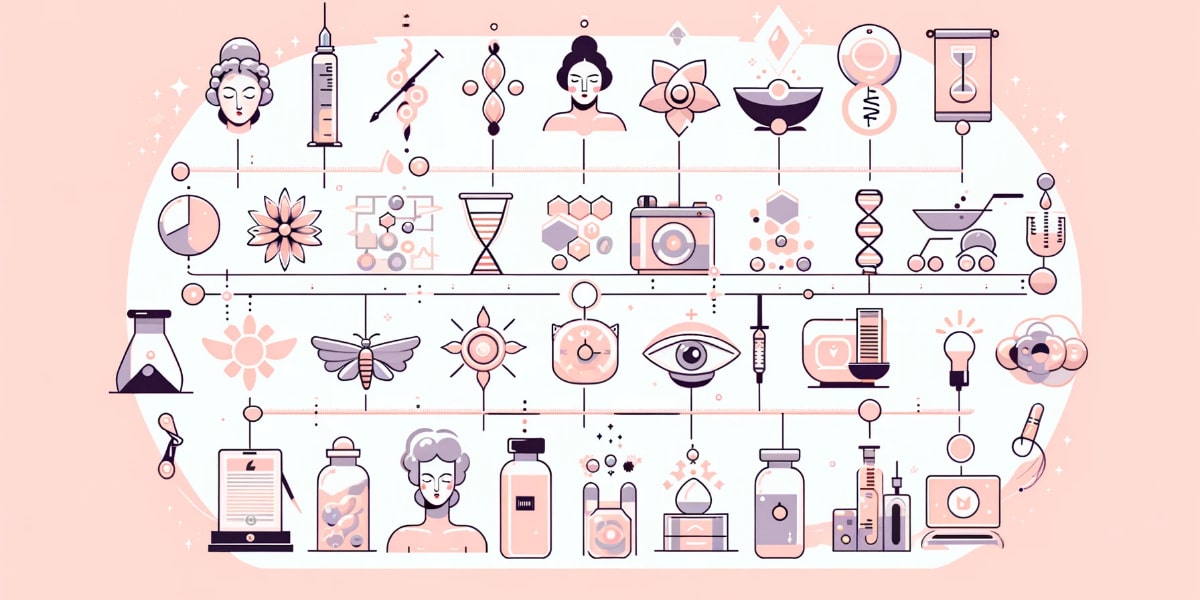Aesthetic medicine has traversed a long, intricate path, evolving from the ancient art of beauty enhancement to the sophisticated realm of modern medical innovations. This journey reflects humanity’s perpetual quest for beauty, a quest that has spurred countless advancements in the field. Today, aesthetic medicine stands as a testament to the blend of art, science, and technology, offering personalized solutions that cater to individual beauty aspirations.
Ancient Beginnings and Cultural Practices
The origins of aesthetic medicine can be traced back to ancient civilizations, where beauty practices were deeply intertwined with culture, religion, and social status. The Egyptians, for instance, were pioneers in utilizing cosmetics for skin protection and enhancement, employing substances like kohl and red ochre. Similarly, the Greeks and Romans adopted various beauty rituals, including the use of baths, oils, and other natural ingredients to maintain a youthful appearance.
These early practices laid the groundwork for aesthetic medicine, emphasizing the human desire for beauty and well-being. They also highlighted the importance of natural ingredients, a principle that remains relevant in today’s eco-conscious beauty industry.
The Renaissance of Beauty: A Shift to Science
The Renaissance period marked a significant shift, as the pursuit of beauty began to intertwine with scientific inquiry. This era saw the emergence of more sophisticated beauty techniques and the use of surgical procedures to correct perceived physical imperfections. The Renaissance’s holistic view of beauty, emphasizing the harmony between physical appearance and intellectual prowess, paved the way for a more comprehensive approach to aesthetic enhancement.
The 19th and 20th Centuries: Medicalization of Beauty
The 19th and early 20th centuries witnessed the medicalization of beauty, as surgical procedures became more advanced and specialized. The development of anesthesia and antiseptics made surgeries safer and more accessible, leading to the birth of plastic surgery as a distinct medical field. This period also saw the introduction of various non-surgical treatments, such as chemical peels and dermabrasion, expanding the repertoire of aesthetic enhancements.
The Modern Era: Innovation and Personalization
The advent of the 21st century has been characterized by rapid technological advancements, transforming aesthetic medicine into a highly sophisticated field. Innovations such as laser therapy, injectable treatments (like Botox and dermal fillers), and minimally invasive surgical techniques have revolutionized the industry, offering more effective, safer, and less invasive options.
One notable figure in the realm of holistic health and aesthetic medicine is Johanna Altman. Her approach, which integrates traditional and modern practices, underscores the evolving nature of the field. Altman’s work exemplifies the personalized care and innovative therapies that define contemporary aesthetic medicine, highlighting the shift towards treatments that not only enhance physical appearance but also promote overall well-being.
The Role of Technology and AI
Technology, particularly artificial intelligence (AI), plays a pivotal role in the ongoing evolution of aesthetic medicine. AI-powered tools and devices enable practitioners to offer highly personalized treatments, analyze skin conditions with unprecedented accuracy, and predict treatment outcomes. This technological integration ensures that aesthetic medicine not only addresses current concerns but also anticipates future trends and patient needs.
The Future: Beyond the Surface
As we look to the future, aesthetic medicine continues to evolve beyond mere surface-level treatments. The field is increasingly embracing a holistic approach that considers the entire individual, blending aesthetic enhancement with overall health and wellness. This holistic perspective is driving the development of treatments that not only improve physical appearance but also enhance quality of life and psychological well-being.
Furthermore, the growing demand for natural and non-invasive treatments is shaping the future of aesthetic medicine. Patients are increasingly seeking options that offer subtle enhancements and prioritize long-term health over temporary fixes. This trend is steering the industry towards more sustainable practices, bio-compatible materials, and techniques that harness the body’s natural healing and regenerative capabilities.
Conclusion
The evolution of aesthetic medicine from ancient rituals to modern innovations reflects humanity’s enduring pursuit of beauty and well-being. This journey, marked by significant cultural, scientific, and technological milestones, has transformed the field into a multidimensional realm that merges art, medicine, and technology. As practitioners like Johanna Altman continue to push the boundaries of what’s possible, aesthetic medicine remains at the forefront of innovation, offering personalized, effective, and holistic solutions to individuals around the world.
In this ever-changing landscape, the future of aesthetic medicine promises even greater advancements, with a continued focus on personalization, safety, and the integration of holistic health principles. As we move forward, the field is set to redefine beauty standards, emphasizing natural, sustainable, and health-oriented approaches that cater to the diverse needs and aspirations of individuals seeking to enhance their appearance and overall quality of life.
Published By: Aize Perez















